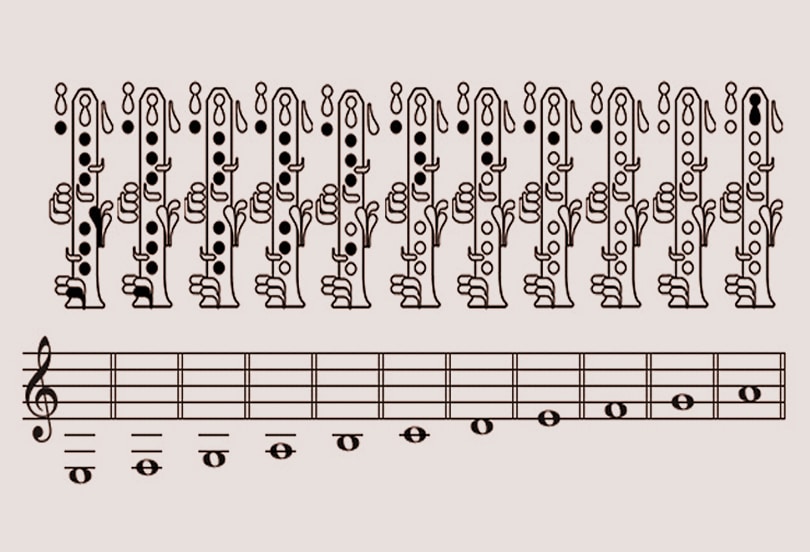A clarinet is a fascinating instrument; it can produce a sound as pure as that of a flute; it is easy to handle as a recorder. It has some of the widest ranges of all musical instruments’ pitch (see the bass clarinet). In short, it is one of the most straightforward, most versatile instruments around, and this is partly why lots of students gravitate toward it.
But the big question for most people is how to play a clarinet’? Trusted Source BBC - Play It Again Play It Again – tips on learning the clarinet www.bbc.co.uk Many people might not have full-time instructors or teachers and have no one to put them through the basics. Not to worry, though. This article is here to solve this problem. The first thing you need, though, is to purchase a clarinet, preferable a beginner-friendly model.
The clarinet model you select as a beginner might be plastic because they are easier to handle and maintain than a wooden clarinet. Next up is the assembling of the instrument.
The first step to learning how to play clarinet is learning how to assemble and disassemble one. It is relatively straightforward, but certain precautions may need to be taken to prevent any instrument damage.
The trickiest part to assemble is the mouthpiece, and special care must be taken. You can get online materials that detail the process of assembling a clarinet to get more help.
The proper way to hold the clarinet is at a 45-degree angle away from you. If you are sitting, you should keep a straight back and ensure that the instrument’s bell is just below your knees. This would ensure that the angle brings the mouthpiece towards your mouth and not the other way around.
If you are right-handed, your right hand’s thumb should rest on the thumb rest at the back of the instrument while your fingers hover above the appropriate keys. In this shape, the left thumb should rest on the octave key on the back of the instrument while the other three fingers should hover above the keys of the lower joint. This is easier with well-centered clarinets like the John Paul intermediate student clarinets.
By this point, you should recognize the parts of the mouthpiece, such as the ligature and the reed. You should also be able to assemble the full mouthpiece while keeping the necessary precautions.
Try to get your embouchure’s shape to be as perfect as possible and experiment with different strengths in the breath of air being expelled while trying to blow.
Sticking to the right shape and positioning of the mouth while blowing should lead to the formation of a sound, at least. If it doesn’t, try again, but this time pay attention to the tightness of the cheeks and avoid pushing them out in an attempt to blow more. Puffing your cheeks affects the shape of the mouth and may lead to a loss of air which subsequently means no sound or only a squeaky sound is made. Naturally, the quality of sound would depend on the quality of the clarinet and the success of your technique.

Don’t put too much pressure on yourself here. Just play around with the keys and get an oral feel of how particular holes affect the strength and speed of breath required to make certain sounds. When you better understand this, you can move along to trying to cover specific holes and moving through rapid hole coverage as fast as possible while maintaining good sound quality. An alternative to the above is to get beginner material and practice the fingering patterns and exercises using the charts or songs they provide.
Glissando can be translated to mean sliding in the English language, and it is a technique that is not unique to clarinets. Despite this popularity and application across musical instruments, the technique is difficult to explain due to the complex throat movements and sliding hand motions needed to produce the right sound and effect. Having said this, it is best learned from practical classes with a skilled instructor. Online tutorials or materials can provide more info on the technique.
Patches are small pieces of material used to protect the mouthpiece from scratching where it comes in contact with your teeth. This is, however, not the only function. They also prevent your teeth from slipping off the mouthpiece, and this is a big deal because a slip would affect your embouchure and, therefore, the sounds produced. Rubber patches or stickers are particularly popular.
The versatility of the clarinet is a big reason for its popularity. This flexibility exists in both the ability of the instrument to traverse a wide range of pitches as well as the use of the instrument to produce a multitude of musical effects, one of which is the glissando.
Chances are if you are reading this, you were attracted by one of these musical effects and motivated to learn how to play clarinet. However, before you jump down to trying out a glissando, put your effort into learning the basics of how to play, clean, maintain, handle and store a clarinet, though modern clarinets like the Hisonic orchestra models come in plush cases with special maintenance tools.
Much goes into playing, and you are best served to work your way through them all because that is how professional, responsible clarinet players are made.